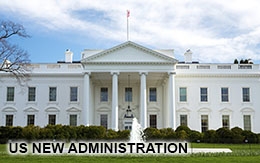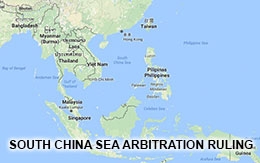Will German ship’s South China Sea presence undermine regional security as China says?
Germany's plan to deploy naval ship in the Indo-Pacific does not change its neutral position in the South China Sea dispute, is a careful practice of international law, and therefore will not erode regional stability nor any littoral country's sovereignty as China might have suggested.
By Hoang Do
March 8, 2021
_cr_420x270.jpg)
News came this week that Germany would be sailing its frigate through the South China Sea during its voyage to Asia in August 2021. A day after, China’s Foreign Ministry responded sternly to the news, saying this passage should not be used as an “excuse” to undermine littoral countries' sovereignty and security. Before that, China’s Defense Ministry emphasized that it firmly opposed any country “interfering in regional affairs” on behalf of freedom of navigation and damaging the common interests of regional countries.
However, China should not be treating Germany’s plan with such rhetoric since the plan does not change Germany’s neutral position in regional dispute and is a careful practice of international law, hence not eroding regional stability.
A plan of neutrality
The latest Note Verbale jointly submitted to the United Nations with France and the U.K. in September 2020 clearly stated that Germany took no position in the territorial dispute in the South China Sea. This was also underlined in the EU’s remarks after the 2016 PCA ruling came out. Germany’s plan does not stray from this stance.
According to the official sources, the warship will not go through the 12-nautical-mile area of any feature in the South China Sea, hence will only practice its right in international waters. The sources also say the aim is to protect Germany’s rule-based principles and values such as commitment to the UN Convention on the Law of the Sea (UNCLOS), not to challenge any particular claim. Moreover, it will cross the South China Sea on the way back after the Asia trip. The trip potentially involves a port call in Australia, a patrol in the Korean peninsula visits to Japan and Singapore without any military exercise. South China Sea does not seem like the main highlight here.
Another point to consider is, compared to the 2021 naval deployment plan and previous activities of the other “big three” of Europe (E3), Germany’s passage is of a smaller extent.
France is no stranger in the area. This February alone, French defense minister Florence Parly announced two naval ships, including a nuclear attack submarine, had conducted a South China Sea patrol without prior notice. Shortly after, French frigate Prairial held a joint replenishing drill with the US and Japan in regional water. Afterwards, France announced its assault ship Tonnerre and frigate Surcouf would pass through the South China Sea twice France’s annual Jeanne d’Arc mission. French warships had also carried out such missions in the South China Sea multiple times (from 2015 to 2017).
The U.K. also sets to deploy its latest air carrier, HMS Queen Elizabeth, to the South China Sea within the first quarter of 2021, when it will reportedly announce its Indo-Pacific tilt in the integrated defense and foreign policy review (possibly by mid-March). That being said, the U.K.’s deployment is still much earlier than Germany’s. Moreover, the U.K. in 2018 already challenged excessive claims in Paracel Islands by practicing a freedom of navigation operation with its HMS Albion amphibious warship. The U.K. also joined France in a patrol through Mishief, Subi and Fiery Cross Reefs in the Spratly Islands. Since then, the U.K. has sent five other vessels through the South China Sea.
Also, Germany does not possess territories in the Indo-Pacific, unlike France and the U.K., which makes its presence here even less of a concern for provocation as China says. France has several claims in the Indian Ocean (French Southern and Antarctic lands, Mayotte and La Réunion Islands and Scattered Island) as well as the Pacific Ocean (New Caledonia, Wallis-and-Futuna, French Polynesia and Clipperton). The U.K. needs to watch over the British Indian Ocean Territory and the Pitcairn Islands group, not to mention Australia being an active member in the Commonwealth with strong ties to the U.K.
To put things in perspective, the last time German ship came here was in 2002, almost two decades ago. The occasion was also exercise-free when the ship made a port call in Japan. Additionally, with the upcoming passing taking place in or after August, Germany will have been the last among E3 to be present militarily after announcing the Indo-Pacific vision.
A plan of careful practice
Germany usually takes time in planning for naval deployment in the Indo-Pacific. In 2019, there was news about Germany possibly sailing through the Taiwan Strait or join a South China Sea FONOP, none of which came to fruition. Talks about a possible deployment in the region were reported last year in various exchanges between Germany and Japan but both sides gave no details or confirmation. According to insiders, up until February 2021, German policy makers were still in disagreement about the route of the deployment, with some still voicing concerns over sailing through South China Sea.
In hindsight, Germany’s Indo-Pacific “strategy” (or “policy guidelines” to be more exact) also reflects this cautious approach. The document mentions “numerous disputed boundaries,” “dangers of hegemony,” “fair competition” while developing connectivity and “closing ranks with democracies” without any direct references. On the security front, the document touches upon general engagement such as “safeguarding” UNCLOS principles, expanding defense cooperation and dialogue, and elaborating “various forms of maritime presence” with thoroughly positive, non-hostile language. “Sovereignty” is not addressed. The only “exercise” reference is that Germany will consider taking part in exercise with partners.
France, the only E3 with an Indo-Pacific document, directly mentions China’s “growing influences,” China’s “ambitions,” or China’s BRI as one of the hubs representing a “growing challenge.” In this context, France, as “leading maritime power” should “reject unilateral ambitions,” carry out “exercises and interception activities” or use “dedicated military operational,” etc. Moreover, France’s vision insists on not only French territories’ sovereignty, but the entire Indo-Pacific’s sovereignty. France will contribute to “sustain regional states’ sovereignty.” This is different from German’s approach.
All things considered, Germany’s upcoming naval passage in the South China Sea is a decision in line with its long standing neutrality in territorial disputes, made with careful consideration. Overall, the passage will only propel the rightful use of the sea embedded in international law rather than undermine any country’s maritime claims or disturb stability in the region as China condemns.
Hoang Do was a Fulbright scholar at the George Washington University.
However, China should not be treating Germany’s plan with such rhetoric since the plan does not change Germany’s neutral position in regional dispute and is a careful practice of international law, hence not eroding regional stability.
A plan of neutrality
The latest Note Verbale jointly submitted to the United Nations with France and the U.K. in September 2020 clearly stated that Germany took no position in the territorial dispute in the South China Sea. This was also underlined in the EU’s remarks after the 2016 PCA ruling came out. Germany’s plan does not stray from this stance.
According to the official sources, the warship will not go through the 12-nautical-mile area of any feature in the South China Sea, hence will only practice its right in international waters. The sources also say the aim is to protect Germany’s rule-based principles and values such as commitment to the UN Convention on the Law of the Sea (UNCLOS), not to challenge any particular claim. Moreover, it will cross the South China Sea on the way back after the Asia trip. The trip potentially involves a port call in Australia, a patrol in the Korean peninsula visits to Japan and Singapore without any military exercise. South China Sea does not seem like the main highlight here.
Another point to consider is, compared to the 2021 naval deployment plan and previous activities of the other “big three” of Europe (E3), Germany’s passage is of a smaller extent.
France is no stranger in the area. This February alone, French defense minister Florence Parly announced two naval ships, including a nuclear attack submarine, had conducted a South China Sea patrol without prior notice. Shortly after, French frigate Prairial held a joint replenishing drill with the US and Japan in regional water. Afterwards, France announced its assault ship Tonnerre and frigate Surcouf would pass through the South China Sea twice France’s annual Jeanne d’Arc mission. French warships had also carried out such missions in the South China Sea multiple times (from 2015 to 2017).
The U.K. also sets to deploy its latest air carrier, HMS Queen Elizabeth, to the South China Sea within the first quarter of 2021, when it will reportedly announce its Indo-Pacific tilt in the integrated defense and foreign policy review (possibly by mid-March). That being said, the U.K.’s deployment is still much earlier than Germany’s. Moreover, the U.K. in 2018 already challenged excessive claims in Paracel Islands by practicing a freedom of navigation operation with its HMS Albion amphibious warship. The U.K. also joined France in a patrol through Mishief, Subi and Fiery Cross Reefs in the Spratly Islands. Since then, the U.K. has sent five other vessels through the South China Sea.
Also, Germany does not possess territories in the Indo-Pacific, unlike France and the U.K., which makes its presence here even less of a concern for provocation as China says. France has several claims in the Indian Ocean (French Southern and Antarctic lands, Mayotte and La Réunion Islands and Scattered Island) as well as the Pacific Ocean (New Caledonia, Wallis-and-Futuna, French Polynesia and Clipperton). The U.K. needs to watch over the British Indian Ocean Territory and the Pitcairn Islands group, not to mention Australia being an active member in the Commonwealth with strong ties to the U.K.
To put things in perspective, the last time German ship came here was in 2002, almost two decades ago. The occasion was also exercise-free when the ship made a port call in Japan. Additionally, with the upcoming passing taking place in or after August, Germany will have been the last among E3 to be present militarily after announcing the Indo-Pacific vision.
A plan of careful practice
Germany usually takes time in planning for naval deployment in the Indo-Pacific. In 2019, there was news about Germany possibly sailing through the Taiwan Strait or join a South China Sea FONOP, none of which came to fruition. Talks about a possible deployment in the region were reported last year in various exchanges between Germany and Japan but both sides gave no details or confirmation. According to insiders, up until February 2021, German policy makers were still in disagreement about the route of the deployment, with some still voicing concerns over sailing through South China Sea.
In hindsight, Germany’s Indo-Pacific “strategy” (or “policy guidelines” to be more exact) also reflects this cautious approach. The document mentions “numerous disputed boundaries,” “dangers of hegemony,” “fair competition” while developing connectivity and “closing ranks with democracies” without any direct references. On the security front, the document touches upon general engagement such as “safeguarding” UNCLOS principles, expanding defense cooperation and dialogue, and elaborating “various forms of maritime presence” with thoroughly positive, non-hostile language. “Sovereignty” is not addressed. The only “exercise” reference is that Germany will consider taking part in exercise with partners.
France, the only E3 with an Indo-Pacific document, directly mentions China’s “growing influences,” China’s “ambitions,” or China’s BRI as one of the hubs representing a “growing challenge.” In this context, France, as “leading maritime power” should “reject unilateral ambitions,” carry out “exercises and interception activities” or use “dedicated military operational,” etc. Moreover, France’s vision insists on not only French territories’ sovereignty, but the entire Indo-Pacific’s sovereignty. France will contribute to “sustain regional states’ sovereignty.” This is different from German’s approach.
All things considered, Germany’s upcoming naval passage in the South China Sea is a decision in line with its long standing neutrality in territorial disputes, made with careful consideration. Overall, the passage will only propel the rightful use of the sea embedded in international law rather than undermine any country’s maritime claims or disturb stability in the region as China condemns.
Hoang Do was a Fulbright scholar at the George Washington University.
Topics:Security
Share:
Comments (0)
Same category
© 2016 Maritime Issues










